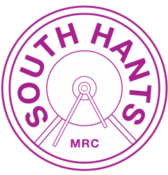These layouts were featured at our 2019 Exhibition
Wickwar (2mm scale, N Gauge)
Farnham & District Model Railway Club
Wickwar is a layout based on a real location; a continuous run with a wide variety of trains; and in a “Dumbbell” format on 4 boards with the fiddle yard behind the backscene. It operates with both DC and DCC control. Wickwar was a small through station on the busy secondary route between Gloucester and Bristol. While operated by BR(M) it had BR(W) trains as well, and some BR(E) stock.
Photographs taken at Wickwar have been used to create the backscene. The Faller car system runs buses and lorries along the front of the layout.

Obbekaer (3.5mm scale, P87 gauge)
Geraint Hughes
Obbekær is unashamedly experimental. After many years of modelling a British subject in P4, I wanted a new challenge, and found it in P87 (finescale HO) modelling, this time with a Danish prototype. Why Danish? Well it has a lot to do with the fact that my home town of Ely is twinned with Ribe in Denmark, so we have been frequent visitors over the years.
The project has involved designing parts and processes for making track, rolling stock and buildings, and Obbekær is the test bed for all of them. The real location is a village just east of Ribe, and the assumption is that a private railway typical of rural Denmark linked Ribe on the west coast of Jutland with Vojens to the east. Such a line was actually planned in the 1920s, but never built. It’s a sleepy rural station woken several times a day by the passage of a railbus or mixed train, but hopefully a lifelike portrayal of many similar locations in Denmark in the 1950s.
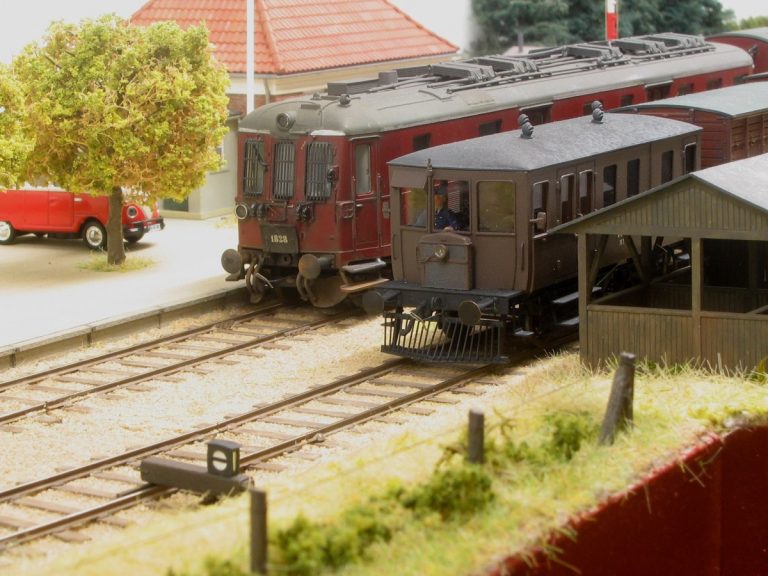
Normandy Junction Engine Shed (7mm scale, 0 gauge)
Guildford 0 Gauge Modellers
The Group was founded in 1966 as a section of The Guildford Model Engineering Society, becoming a separate entity in the 1980s when the Group obtained its own accommodation at Normandy Village Hall.
The Normandy Junction layout represents the period from the late 1940s to late 1960s, though heritage locomotives can also be seen. The engine shed has recently been extended to include a traverser and the entrance to a loco works. This also acts as a backdrop to the fiddle/cassette board, which allows much more scope for loco movements on and off the shed, with routes via the main line to the shed or the railway works.
Photograph: Tony Wright
Sandford & Banwell (4mm scale, P4 Gauge)
 Jeff and Pete Day
Jeff and Pete Day
The layout is loosely based on Sandford & Banwell station on the Cheddar Valley line in North Somerset. The line was known as the strawberry line due to the amount of strawberries grown in the local area. The layout is not meant to be an accurate model of the station but a base for running various trains seen at the period, although the general layout and style of the buildings are accurate. Also included is the quarry line running south from the station.
Allt y Graban Road (4mm scale, P4 Gauge)
Bernie Baker
Allt-y-Graban Road represents an alternative existence for the bottom end of the Central Wales Line btween 1957 and 1967. The 1964 closure from Pontardulais to Swansea Victoria didn’t happen and a new colliery off an MOD branch was opened. The junction Ground Frame was upgraded with a ‘modern’ track circuited single-lead junction complete with a new signal box – a WR Type 37 ‘ Plywood Wonder’
This is a first attempt at a P4 layout and the opportunity has been taken to see how many model railway conventions, cliches and habits can be ignored. 
Navigation Road (4mm scale, EM Gauge)
Sarum Finescale Group
Navigation Road is set in a little known area of North East London circa 1970.
The canal arrived many years before the railway but sees no commercial traffic now. Rail services to be seen include raw material deliveries to the engineering works and inter-regional freights to a nearby marshalling yard, the locomotives from which visit the shed for servicing.
Locomotives and rolling stock are a mixture of RTR and kit built, detailed and weathered appropriately to the era portrayed. Buildings are scratch built mainly in plasticard from prototype photographs.
Widley and St George (4mm scale, OO Gauge)
South Hants MRC
One for our younger visitors. Come and drive trains pulled by Thomas, Percy, Gordon and more of their friends
Arun Quay (7mm scale, 0 gauge)
Gordon & Maggie Gravett
Arun Quay came about by the desire to build a small ‘0’ gauge layout that could easily be transported in a car. The resulting dimensions dictated that any thoughts of ‘main line’ running were out of the question and a shunting yard was the only real option available. Thought was also given to make everything as light as possible – what may be easy to handle now might feel quite a lot more awkward in ten years time!
The scenario is a small quayside yard on the River Arun – near Littlehampton in West Sussex in the 1950s. It is fed by a line on the trackbed of an old tramway that, together with many of the facilities and workshops, dates back to the days of 19th century sailing craft.
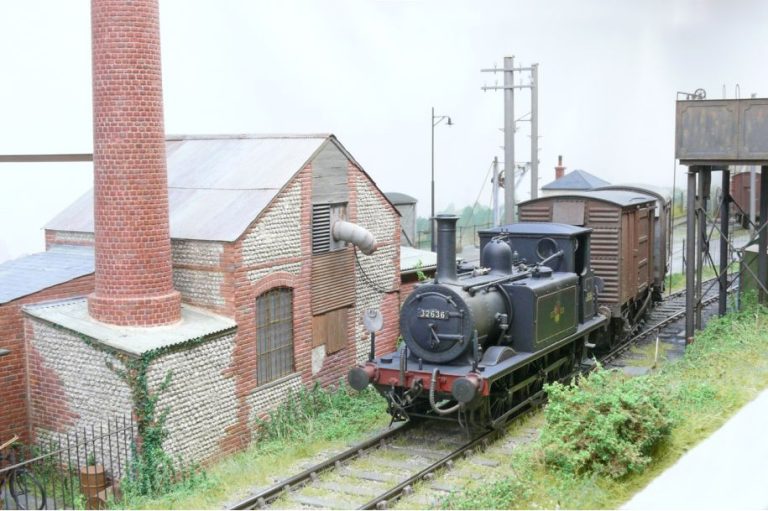
Faringdon (4mm scale, P4 Gauge)
Rex Davidson
Built by the well-known model maker and author, Stephen Williams, the layout is a scale model of the former GWR branch station at Faringdon in Oxfordshire and is entirely hand-built in 4mm scale to P4 (18.83mm) gauge. The model depicts the station as it might have appeared during the transition from GWR to BR ownership during the period between 1947 and 1955. As was typical of minor routes, the buildings retain the colours of the former GWR, but most of the engines and stock carry the new liveries of British Railways. Although at various stages of its history, Faringdon saw passenger services that linked the town to both Swindon and Didcot, by 1945 the service was little more than a shuttle service to the junction at Uffington and these ceased at the end of 1951. Some artistic licence has therefore been used in extending both the time frame for the model and in showing a more varied range of typical branch line trains than would actually have been seen at the time.
 Photograph: Andy York/BRM
Photograph: Andy York/BRM
Kitedale (4mm scale, P4 gauge)
Ray Hodson
Until April 2017 this layout was called Kitehouses, as exhibited by Dave Hawkins and Tony Sullivan (and me sometimes) for some nine years.
The location has been moved from the North East to Lancashire, to become an ex Lancashire and Yorkshire Railway terminus to the north of Rochdale, with a connection to the Oldham Loop Line. Kitedale is the passenger terminus but the line continues to a Paper Mill, Quarry and Industry goods only line. The period is late fifties – early sixties, the final years of steam and the start of diesels and DMUs.
The model has been developed to include buildings and structures that match the ex L&Y situation. New fiddle yards have been added, and a new back scene of the Pennines.
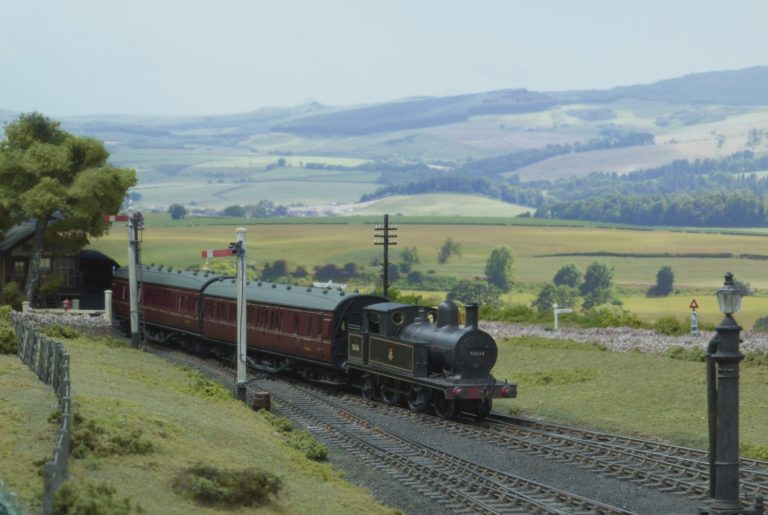
Clifton & Lowther (2mm scale, N gauge)
Eric Garracher
The model is based on Clifton and Lowther which is situated on the West Coast Mainline just south of Penrith which is a location where I remember watching the trains go by in my youth and this was the reason for building the layout. The model reflects the location as it was in the late 1950s and 1960s when steam traction was still active.
The trackwork on the scenic section of the layout was built using Finetrax by British Finescale which uses code 40 rail and a gauge of 9mm which allows the use of current N gauge rolling stock. The track in the fiddle yard , where the trains are stored, is Peco finescale code 55.
The buildings are all scratchbuilt and are based on the originals.
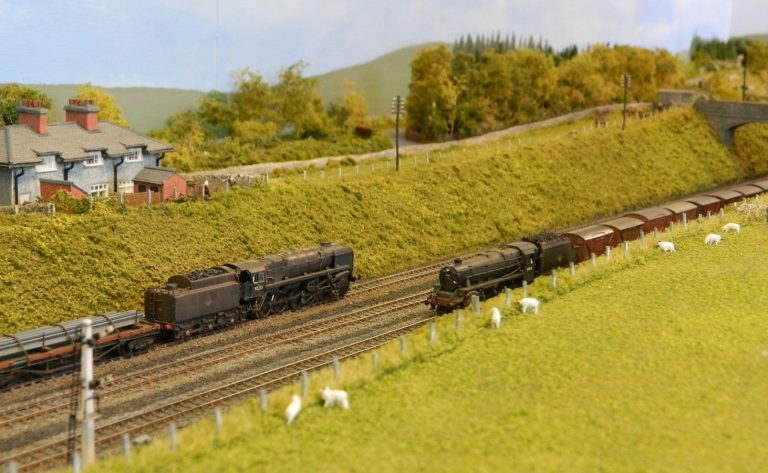
Cornwallis Yard (4mm scale, EM Gauge)
David & Alison Barker, Southampton MRS
The work of the late Bob Haskins, Cornwallis Yard represents a fictional section of the GWR’s Millbay branch in Plymouth circa 1935. The branch was famous for providing a railhead for ocean liner traffic from New York and elsewhere, with the GWR providing special trains between Plymouth and London Paddington.
On the upper level is part of Millbay Road Station and Cornwallis Yard goods depot. The lower level (known as Bulwark Sidings) includes a small engine shed and a couple of carriage sidings. A working wagon hoist provides access between the upper and lower levels for a wagon works.
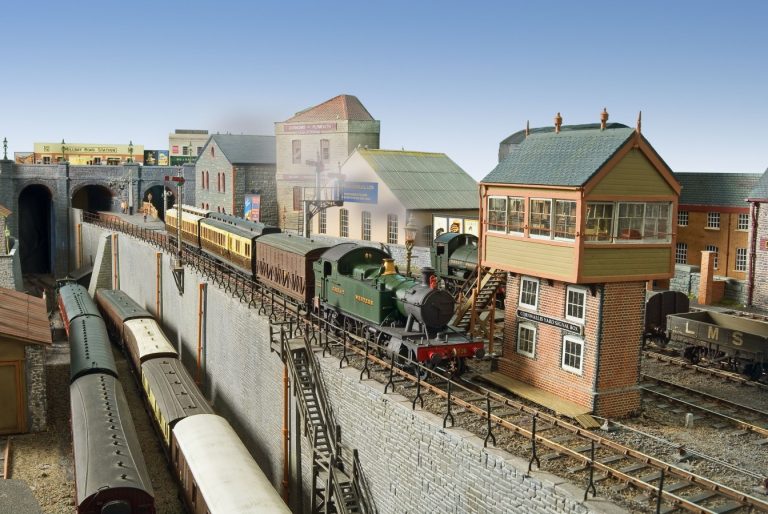
Notes:
First Title widget in each column has no top border, margin or padding – don’t use these further down the page.
The second Title widget in each column has 30px margin, 10px padding and a border above the text – duplicate these for additional layouts.
For text & images, just use normal widget from the left-hand widget area … drag them as required.
Refer to previous years’ exhibitions for comparison.
